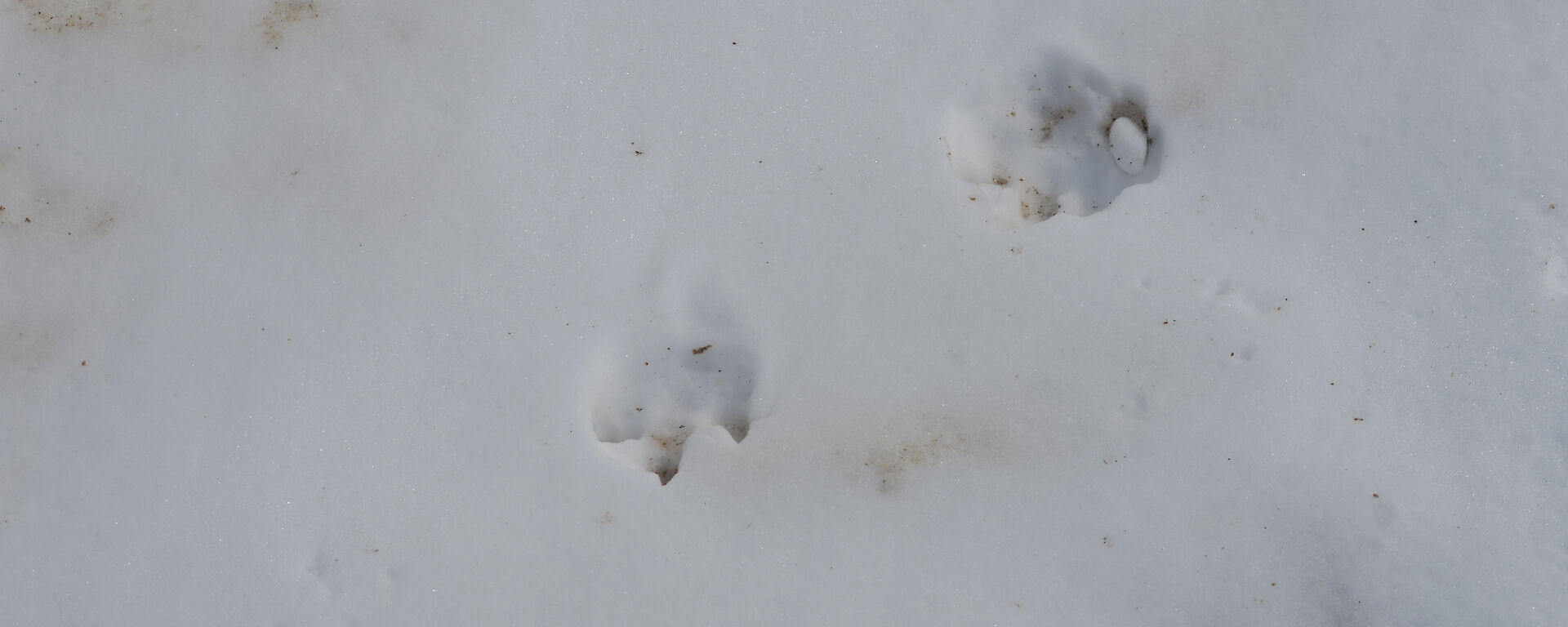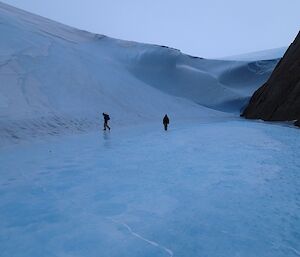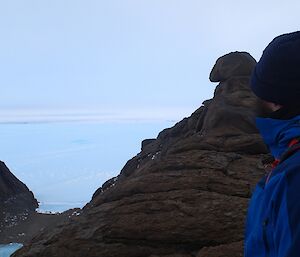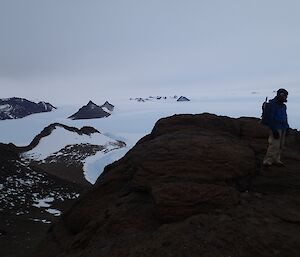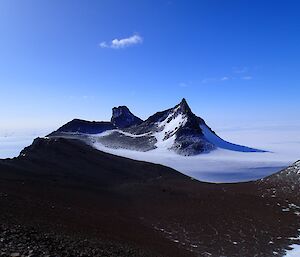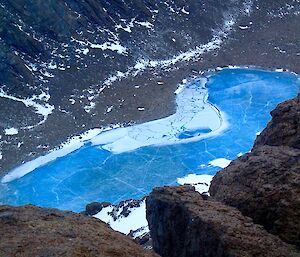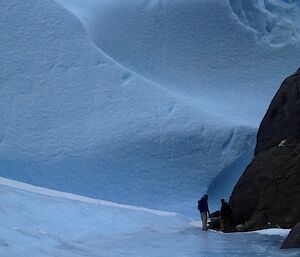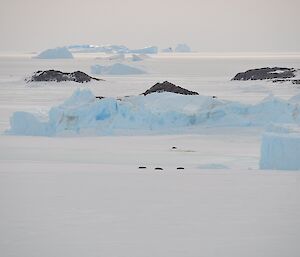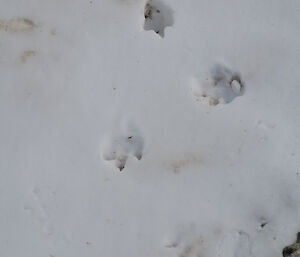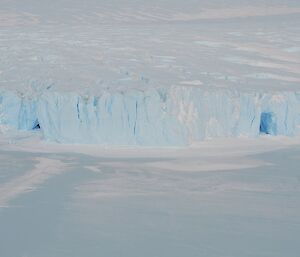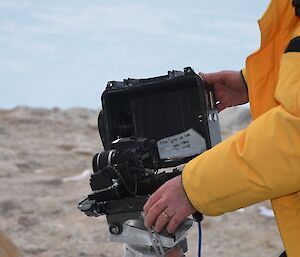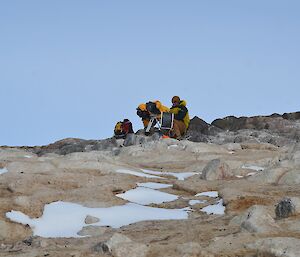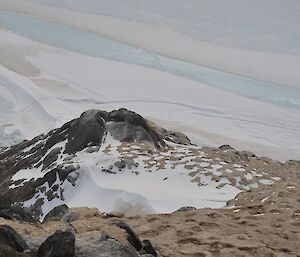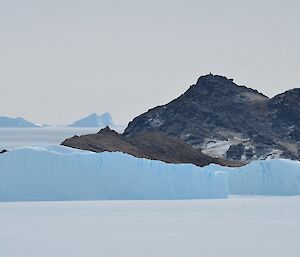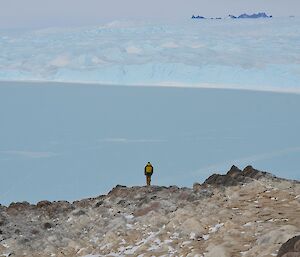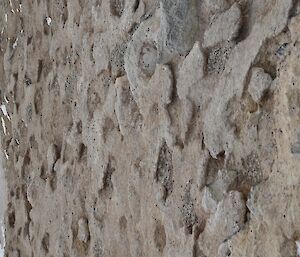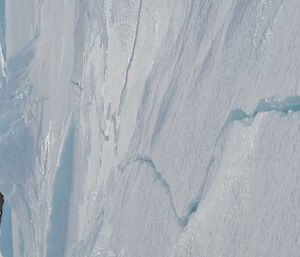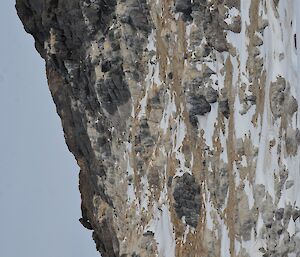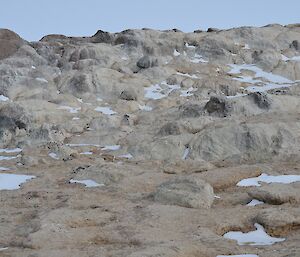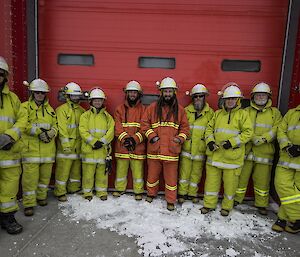On Tuesday the sun was shining weakly through the clouds that have blanketed the station lately, so we decided to return to the Rookery Islands to try and get one of the automatic cameras working. I haven’t made it to the west of the station this year so I tagged along, hoping we might see a baby seal or one of the first Adèlie penguins wandering back home for the summer.
We drove along the coastline past the glaciers that surround the station. The sight of the glaciers has become almost normal but as we left the sun hit them at just the right angle to bring out the deep translucent blue of the glacier ice. A reminder of how amazing the landscape around Mawson station is.
Recent blizzards have swept the surface of the sea ice clean and left it looking like blue tinted glass, the little cracks craze out across the surface.
Soon the island that we were headed for appeared in front of us, shades of brown contrasting against the blues and whites. There was a couple of seals lazing next to an iceberg but no other signs of life. We park up, try to apply SPF 50+ sun cream, but it had frozen on the way and it is a bit like rubbing greasy ice chips on your face.
Jumping out the Hägg on to the slippery sea ice that was polished like an ice rink, I adopted a wide leg stance and half skated, half walked to the shore.
Stepping onto the island I expect rock, instead I feel sponge under my feet and take a deep breath of ammonia, dead animals and fish. OMG it is horrible, the stench is amazing, one hundred times worse then being stuck behind a cattle truck in the tropics in summer. Literally my eyes were starting to water and there wasn’t even any penguins there yet and its still −10°C! Wow, new respect for penguin scientists.
Walking over the spongy surface is a very odd feeling, for years penguins have been coming to these little nests every year to breed and moult. The evidence is everywhere you step, years and years of penguin poo, dead penguins and little rocks that line the nests. At first I tried to step carefully and respectfully but there are just too many layers. In the end it was a bit of a rush up the hill to the bits that catch the breeze where the debris has blown away.
At the top of the hill the breeze blows the worst of the smell – old feathers and dried guano away, and the view stretches far into the distance. There were seals chilling out next to the large tide cracks or pools of open water. They are huge and look ready to burst, their babies are due any day. The icebergs and glaciers creak and groan. The sun radiates with a ferocity, bouncing at you from every angle.
There is the expectancy of spring in the air, especially when we find the first little footprints in the snow that signal the Adèlie penguins have started to arrive home. There is no other sign of the new arrival but soon the islands will be swarming with hundreds of little penguins. They will be fighting over little rocks, laying eggs and keeping watch over chicks. The Rookery Island will be a place of energy, action and lots and lots of fresh smelly poo!

